Molino ★ Muslins ★ Shirting ★ Seamless width up to 12m
✓Flame retardant B1 ✓ by the meter ✓ bales ✓ assembled ✓sewn
Wide textiles made of cotton muslin are an absolute standard in the theatre world. Available in flame-retardant quality in basic colours – black, white and natural – they are perfect as horizons and panoramas. On request, we can dye every technically possible colour tone for you. Theatre workshops and especially stage designers like our high-quality stage fabrics for painting and creating prospects. They are also popular in painting rooms as an affordable underlay.
Trade fair constructers and decoration professionals value the seamless and well manufactured material as a velum, a ceiling covering and for covering partition walls. Muslins made of flame retardant Trevira or respectively of polyester fibres are a popular choice for trade fair construction.
-
MUSLIN SCHLEIERNESSEL COmore...
1000810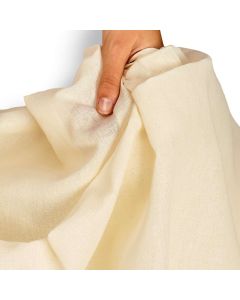
-
MUSLIN SCHLEIERNESSEL CO - BALESmore...
1000811/B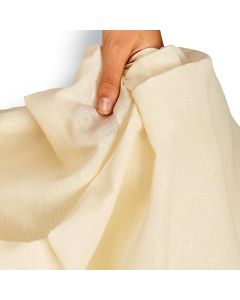
-
MUSLIN SCHLEIERNESSEL CO - ROLLSmore...
1000811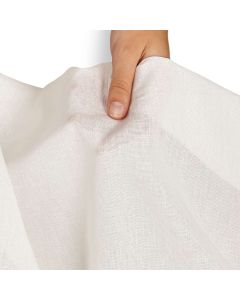
-
MUSLIN SCHLEIERNESSEL COmore...
1000817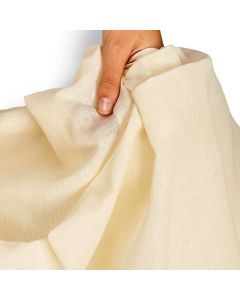
-
MUSLIN SCHLEIERNESSEL COmore...
1000861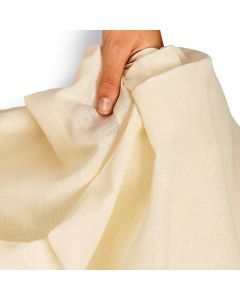
-
MUSLIN SCHLEIERNESSEL COmore...
1000821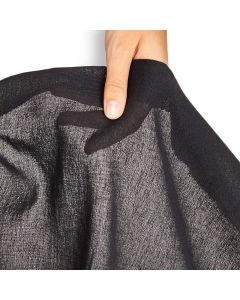
-
MUSLIN SCHLEIERNESSEL COmore...
1000831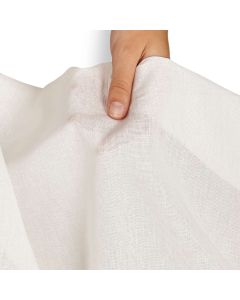
-
MUSLIN SCHLEIERNESSEL CSmore...
1000871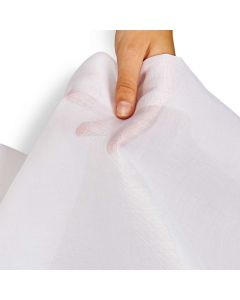
-
MUSLIN SCHLEIERNESSEL CSmore...
1000873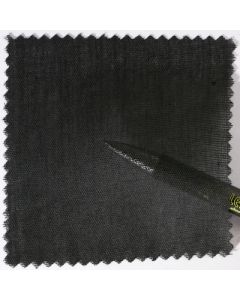
-
CANVAS NESSEL CO ecrumore...
1000025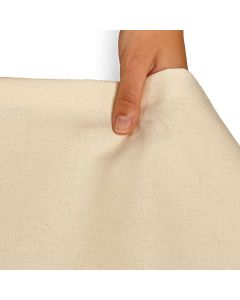
-
CANVAS NESSEL CO ecrumore...
1000320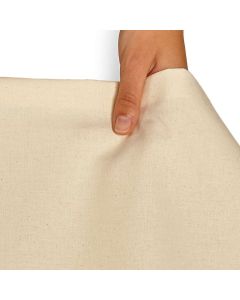
-
CANVAS B1 160/200more...
1000061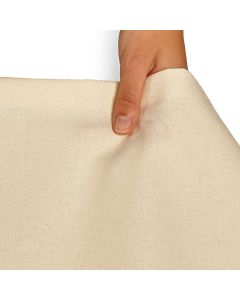
-
CANVAS B1 220/200 - BALESmore...
1000111/B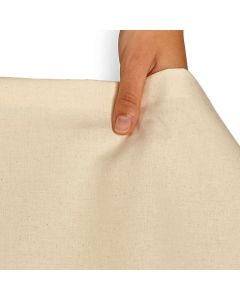
-
CANVAS B1 220/200 - ROLLSmore...
1000111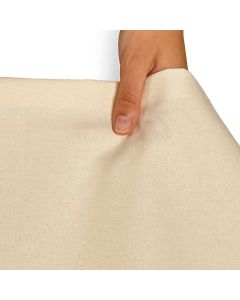
-
CANVAS NESSEL COmore...
1000123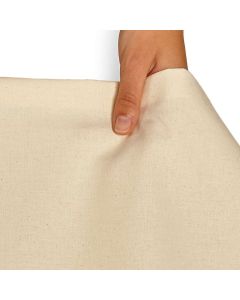
-
CANVAS B1 310/200 - BALESmore...
1000131/B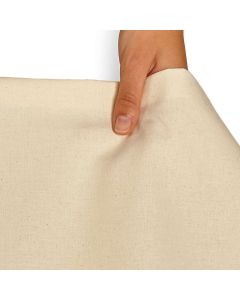
-
CANVAS B1 310/200 - ROLLSmore...
1000131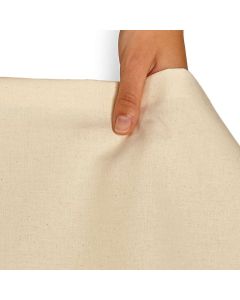
-
CANVAS NESSEL COmore...
1000151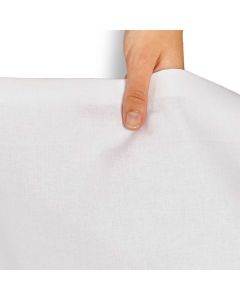
-
CANVAS B1 520/160more...
1000213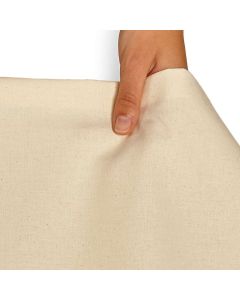
-
CANVAS B1 520/200more...
1000162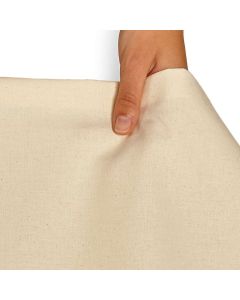
-
CANVAS B1 620/200more...
1000171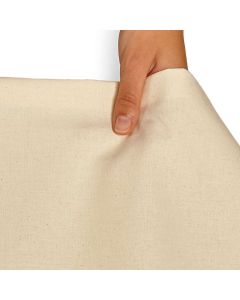
-
PAINT CANVAS 600 B1more...
1000174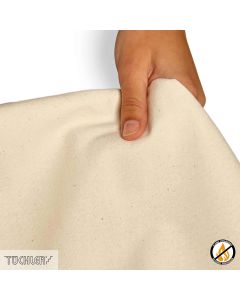
-
CANVAS B1 1000/225more...
1000321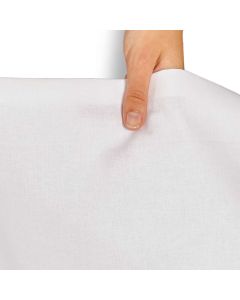
-
CANVAS NESSEL CSmore...
1000204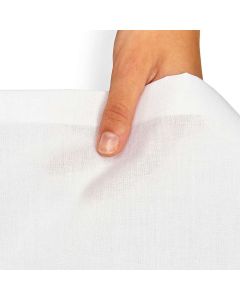
Where does the name nettle tissue come from?
Even though cotton has been used in many cultures around the world for thousands of years, it did not find its way into Europe until the 14th century. Even then, cotton was a luxury item that only rich people could afford. It was not until the mass production of cotton cultivation and cotton spinning and weaving in the 18th century that cotton became accessible to all sections of the population.
Until then, one had to be content with the fibers growing in Central Europe. To this day, these include linen, hemp and the fibre of nettle. The latter was the cheapest material and was obtained from the stems of the stinging nettle [lat: Urtica dioca]. Simple fabrics were made from the stem fibre of the stinging nettle, which to this day give their name to the fabrics nettle, raw nettle or veil nettle. This is also the case if these fibres are now mainly made of cotton or, more rarely, polyester fibres (e.g. Trevira + Trevira CS).
What is the difference between veil nettle and (raw) nettle tissues?
Nettle tissue
Nettle fabric refers to a fabric that is produced by crossing two threads in a ratio of 1:1 - i.e. one longitudinal thread alternately crosses a transverse thread. Today, nettle fabrics are mainly made of cotton. Less commonly, polyester yarn such as Trevira CS or polyester FR is used for the production of nettle. With a basis weight of usually 150-250g/m², nettle fabrics are dense, i.e. opaque fabrics.
Veil nettle
If the same weaving technique is carried out and a fabric construction of 70-90 g/m² is produced, then the resulting textiles are translucent to transparent. So they are veils and thus give the veil nettle its name.
Raw nettle
Nettle fabrics are raw nettles if you take them directly from the loom. The term raw stool or raw nettle indicates that these tissues have not been further treated after the weaving process. So neither the sizing was removed, bleached nor dyed. Some manufacturers also cite raw nettle fabrics that are resistant to flammability, meaning natural cotton fabrics with flame retardancy. In the strict sense of the word, however, substances treated in this way are no longer raw and therefore no raw nettle.
Heavy nettle
If weaves more densely and thicker yarns are used, heavier fabrics with basis weights of over 225 g/m² are created. Such heavy nettle tissues are called heavy nettle. They are used as horizon fabrics or painting surfaces / painting canvases in classical theatre painting or large-format art painting.
Shirting or sheeting?
If raw nettle is bleached, a white fabric is created, which was originally used as a bed sheet / sheeting - or for the production of simple shirts "shirts". The German-language corruption "shirting" comes from this word root.
What all the words have in common is that they denote a whitewashed nettle tissue.
Mollino: the Austrian name for nettle tissue
Especially in Austrian theatres, the name Mollino is often used for nettle tissue. Where this name came from could not be researched by us exactly. However, the most likely is its origin from the Italian word Molino, which means mill. If you look at the flour sacks of past and present, you will see a nettle tissue. It is therefore reasonable to assume that this word Mollino is a corruption of the word Molino and originally describes the material from which flour sacks were made.
We are happy to take up your knowledge in this matter and add to this text.
Wide range of widths - the peculiarity of nettle tissues
Nettle fabrics are woven in widths from 90 cm to more than 1200 cm - i.e. 12m.
The gradation is usually 160 cm, 220 cm, 300 cm, 320 cm, 420 cm, 520 cm, 620 cm, 820 cm, 1050 cm and more than 1200 cm. This variety of material widths is unique in the textile world and is the result of the wide range of possible applications of Mollino or Nettel fabrics.
Narrow fabric widths are used as underlay and cashier material for furniture wallpapering or costume making. The larger fabric widths are used for covering and wallpapering partition walls in trade fair and decorative construction. Large widths from 420cm are mainly used as seamless horizons and panoramic fabrics in theatre, opera and event decorations. Especially when using light behind the fabric, the advantage of the seamless fabric width becomes apparent. In this way, ceilings can be backlit by tension without showing seams. But backlit stage paintings, such as theatre brochures and large-format scenery paintings, can also be backlit without drawing disturbing lines.
Are Trevira CS nettles or cotton better?
Trevira CS - Polyester FR and other flame-retardant polyester fibres
Fabrics made of Trevira CS or similar fibres such as polyester FR have their great advantage when it comes to ensuring flame retardancy even after heavy watering (such as rain or water jets) or washing. In addition, polyester fabrics have a higher tear resistance and better resistance to (sun) light.
The disadvantages are that the painting of polyester fabrics by theatre painters is much more difficult.
It should be noted that the term "permanent flame retardancy" applies exclusively to new or professionally cleaned and clean textiles. The painting invalidates the flame retardant report and it is highly likely that the flame retardant will actually be removed.
From an ecological point of view, one should be aware that Trevira CS is a polyester synthetic fibre whose origin lies in petrochemicals, i.e. fossil raw materials. Disposal is also not so easy via cotton, which ultimately composts normally.
Cotton
Nettles made of cotton, as can be deduced from the above lines, are easily painted and biodegradable after use. Depending on the price of cotton on the commodity exchanges, cotton nettles are usually significantly cheaper than those made of polyester FR / Trevira CS.
Cotton nettle / mollinos are impregnated with aqueous flame retardants to be flame retardant. Heavy watering or washing removes the flame retardant effect and any associated fire protection report becomes invalid.
AÜ 110823
